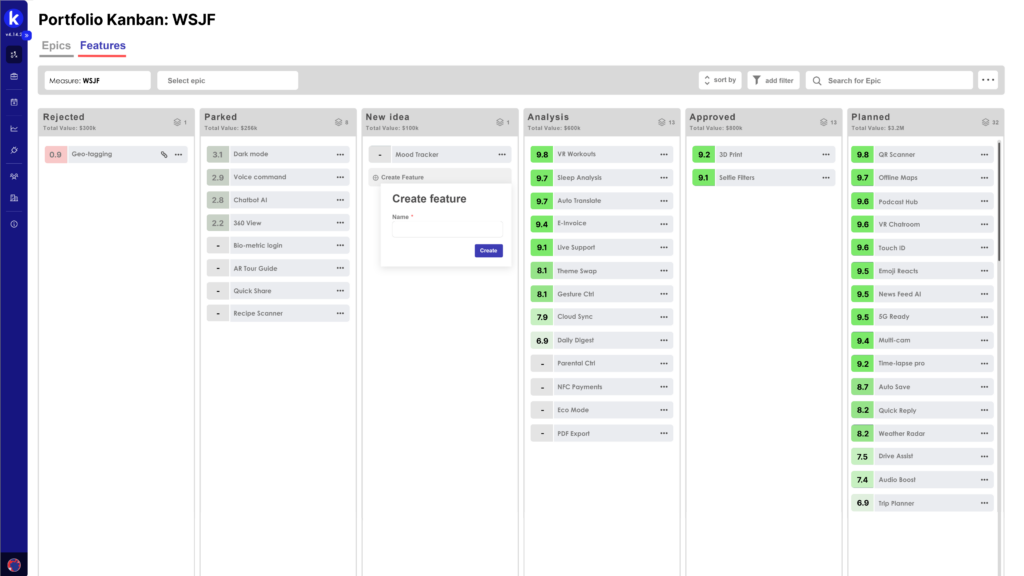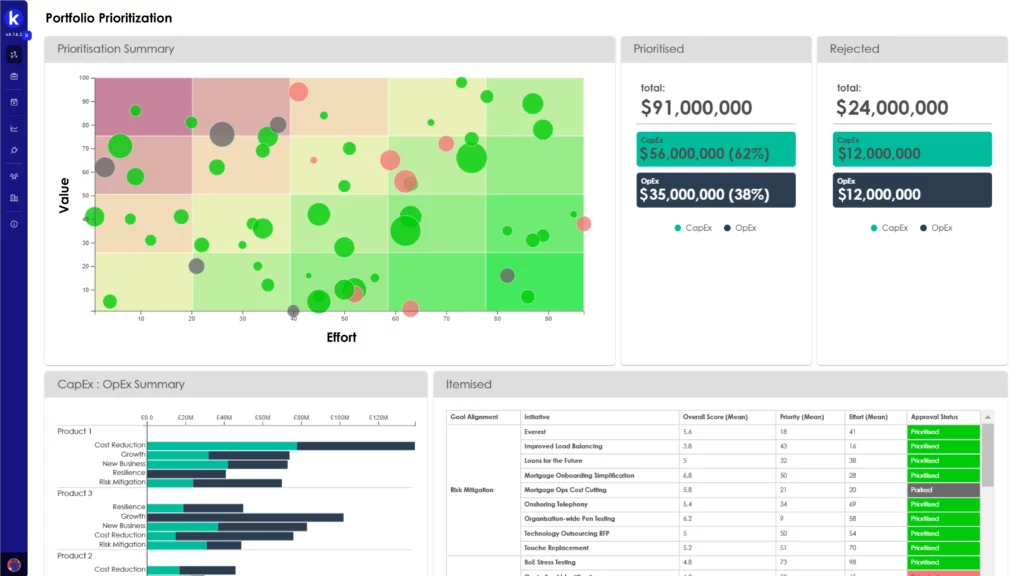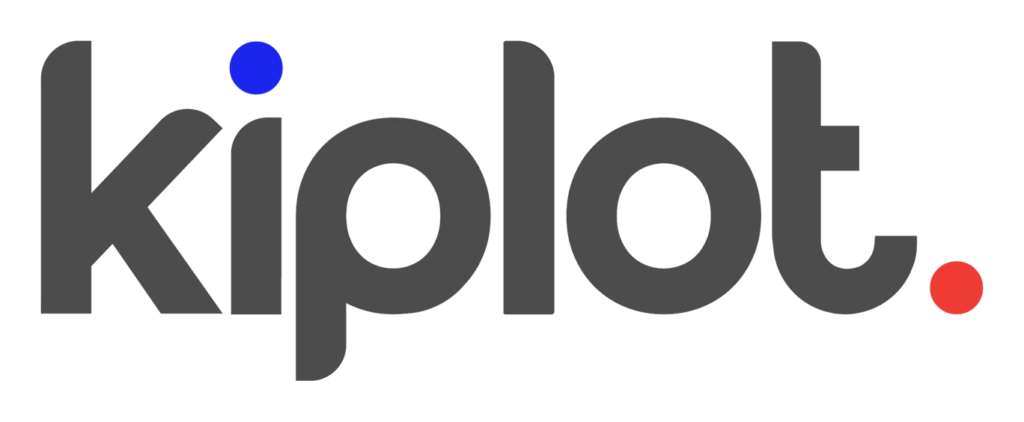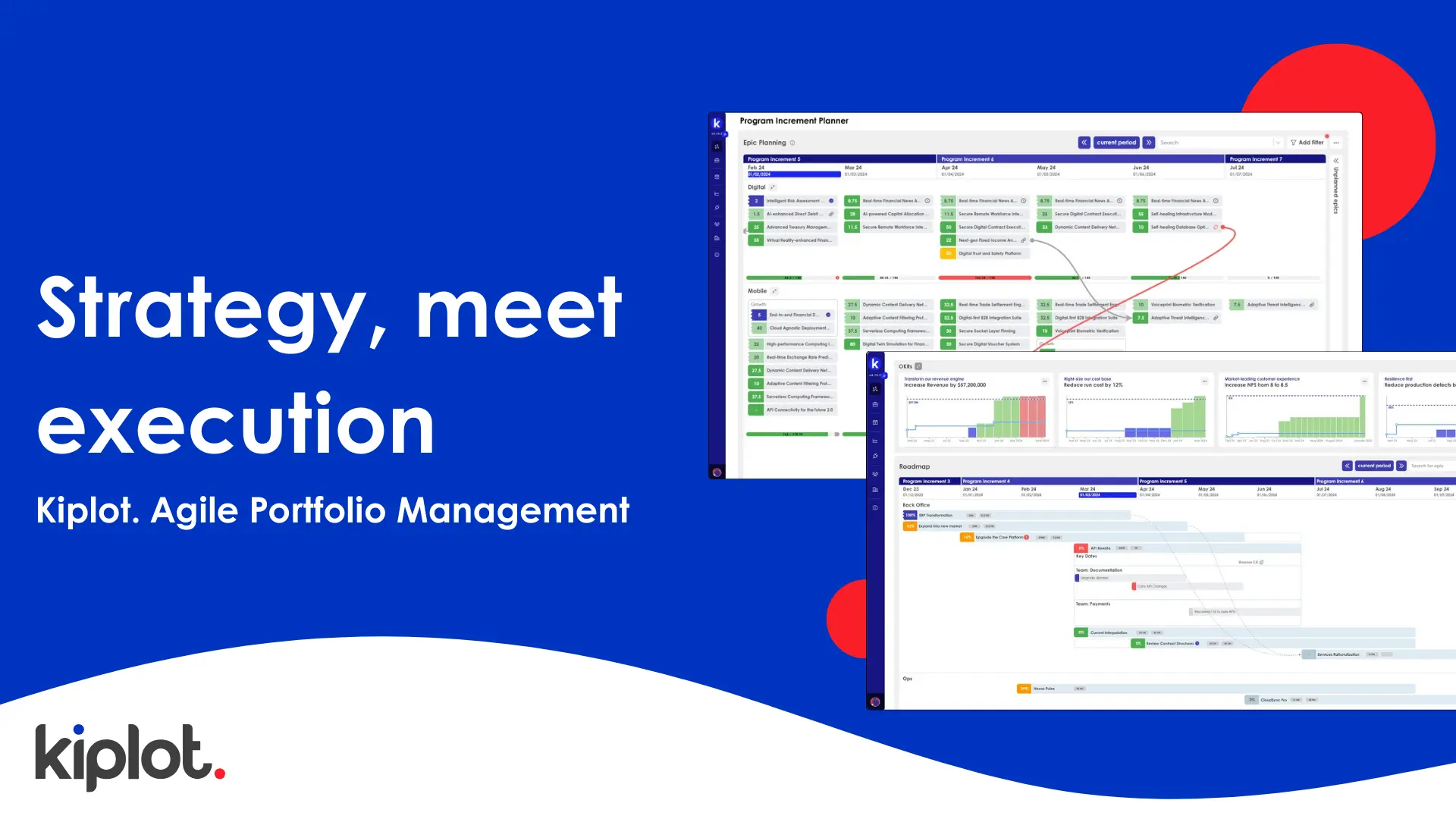Introduction
Prioritization is a cornerstone of portfolio performance in agile organizations. Effective prioritization ensures that teams focus on the most critical tasks, optimizing resource allocation and accelerating delivery. By systematically deciding the order of tasks, projects, and initiatives based on their importance and urgency, teams can enhance their efficiency, streamline workflows, and improve overall productivity – delivering greater value to customers.
Organizations that have further advanced towards agile maturity understand that prioritization is not just about ordering tasks; but about aligning work with strategic goals and boosting efficiency, both of which are crucial behavioral milestones to reach before achieving true agile maturity. Mature organizations are able to respond swiftly to market demands, deliver a predictable and continuous cadence of value.
In this article, we will explore various agile prioritization techniques and their benefits, alongside providing specific examples and ideas of how to implement them in your organization.
💭 Remember: prioritization is not annual. It is iterative and ongoing.
What is prioritization in agile?
💡 Prioritization in agile means systematically deciding the order of tasks based on their importance and urgency. This practice enhances focus, resource management, and delivery speed, ensuring that teams work on what truly matters.
Effective prioritization is crucial for several reasons:
- Maximizing Efficiency: By focusing on high-priority tasks, teams can allocate resources effectively and avoid wasting resource on less important activities. For example, a team might prioritize fixing critical bugs over implementing new features to ensure product stability.
- Aligning with Strategic Goals: Prioritization helps ensure that work aligns with the organization’s strategic objectives. This alignment ensures that all efforts contribute to long-term goals. For example, prioritizing tasks that enhance customer satisfaction can deliver against an objective of strategic growth.
- Facilitating Agile Response to Change: Agile organizations require flexibility to adapt to changing requirements and market conditions. Prioritization allows teams to re-evaluate and adjust their focus quickly, maintaining relevance and competitiveness.
The consequences of not prioritizing effectively can be severe:
- Missed Deadlines: Without clear prioritization, teams may spread their efforts too thin, leading to delays. For example, working on multiple low-priority tasks simultaneously can prevent the completion of critical deliverables.
- Resource Misallocation: Ineffective prioritization can result in resources being allocated to less impactful tasks, reducing overall productivity. For instance, assigning highly skilled team members to minor tasks instead of strategic projects with greater impact potential can hinder value delivery.
- Decreased Team Morale: Constantly shifting priorities and lack of clear direction can demotivate teams, leading to burnout and reduced performance. For example, if team members frequently switch tasks without seeing tangible progress, their engagement and morale may suffer.
By understanding and implementing effective prioritization techniques, agile teams can avoid these pitfalls drive successful outcomes.
Agile prioritization techniques
Effective prioritization is critical in agile project management to ensure that teams focus on delivering the highest value. Below are some key techniques used in agile organizations.
Weighted Shortest Job First (WSJF)
WSJF prioritizes tasks based on their cost of delay divided by the job duration. It helps teams identify the most time-sensitive and valuable tasks.
WSJF is defined as:
WSJF Score = Cost of Delay ÷ Job Size
Cost of Delay is typically configured out of the box to consider factors such as user/business value, time criticality, and risk reduction. However, this configuration can be adjusted to meet an organization’s specific needs. For instance, during a particularly unstable period, an organization might decide to increase the weighting of risk reduction.
Job Size is the estimate of the effort required to complete a task. Various methods can be used for estimation, including T-Shirt sizing, Agile Poker, and Fibonacci sequencing.
This technique is crucial for minimizing delays and maximizing value delivery. By focusing on high-priority tasks, teams can ensure timely delivery and reduce the impact of potential delays.

| Benefits | Minimizes delays, maximizes value delivery, and helps teams focus on high-priority tasks. |
| Potential Pitfalls | Requires accurate estimation of cost and duration, which can be challenging. |
| Example | A feature that would significantly increase revenue if delivered quickly would be prioritized over a less impactful task. |
| How To Implement | Calculate the cost of delay and job duration for each task. Prioritize tasks with the highest WSJF score during sprint planning. |
RICE Scoring Model
RICE scoring is a prioritization framework that helps agile teams make data-driven decisions by evaluating tasks based on four criteria: Reach, Impact, Confidence, and Ease. Each task is scored on these criteria, and the highest-scoring tasks are prioritized. This method allows for a balanced approach, combining quick wins with high-impact initiatives to ensure strategic prioritization.
Breakdown of RICE Criteria
- Reach:
- Definition: Reach estimates how many people will be affected by the task or project within a given time frame.
- Calculation: Typically expressed as the number of people or events per time period (e.g., number of users per month).
- Example: If a new feature is expected to be used by 500 users per month, its Reach score is 500.
- Impact:
- Definition: Impact measures the potential benefit to each affected user or event.
- Scale: Usually scored on a scale (e.g., 0.25 = minimal impact, 0.5 = low, 1 = medium, 2 = high, 3 = massive).
- Example: If adding a new feature is expected to have a high impact on user engagement, it might score a 2 on the Impact scale.
- Confidence:
- Definition: Confidence reflects how certain the team is about the estimates for Reach and Impact.
- Scale: Expressed as a percentage (e.g., 80% confidence).
- Example: If the team has strong data backing their estimates, they might assign a Confidence score of 90%.
- Ease:
- Definition: Ease measures how simple or difficult it is to implement the task.
- Scale: Typically scored on a scale from 1 to 10, where lower numbers indicate higher complexity.
- Example: If a feature is straightforward to implement, it might have an Ease score of 8.
Calculating RICE Score:
RICE Score = Reach x Impact x Confidence ÷ Ease
Example Calculation
Consider a task with the following scores:
- Reach: 1000 users/month
- Impact: 2 (high)
- Confidence: 80% (0.8)
- Ease: 5
The RICE score would be: 1000×2×0.85 ÷ 5 = 320
RICE scoring is particularly useful for:
- Product-Led Businesses: Where Reach and Impact are critical for evaluating the potential success of product features.
- New to Agile: Organizations new to agile prioritization techniques can start with RICE to bring structure and clarity to their process, leveraging the Confidence metric to gauge and improve estimation accuracy over time.
| Benefits | Facilitates data-driven decisions, balances quick wins with high-impact tasks, and provides a structured framework for prioritization. |
| Potential Pitfalls | Scoring can be subjective, and may require regular reassessment. |
| Example | A task with high impact, high confidence, and low effort would be prioritized over a task with lower scores in these areas. |
| How To Implement | Estimate the number of people or projects affected by the initiative using data analytics during backlog review sessions. Assess the potential impact on a scale (e.g., 1-5) based on how significantly it will affect users or business outcomes during sprint planning. Measure the confidence level in the estimates of reach, impact, and effort using historical data and expert judgment during planning sessions. Estimate the amount of work required to complete the task, typically measured in person-weeks, during backlog refinement. |
💡 Kiplot’s advanced prioritization tools enhance flexibility and precision in agile initiatives, including integrating RICE scoring to measure impact on OKRs and tailoring estimations to team skills.
Value vs. Effort Matrix
This technique involves plotting tasks on a matrix based on their value and the effort required to complete them. Tasks that offer high value with low effort are prioritized.
The Value vs. Effort Matrix helps teams maximize ROI by focusing on tasks that provide the most significant benefits with the least amount of work. It ensures efficient use of resources and time.
| Benefits | Maximizes ROI, ensures efficient use of resources, and helps teams focus on high-impact tasks. |
| Potential Pitfalls | May oversimplify complex tasks, and some high-effort tasks may still be necessary. |
| Example | A task that improves user experience with minimal development effort would be prioritized over a complex feature with limited impact. |
| How To Implement | Plot tasks on a matrix based on their value and effort during sprint planning. Prioritize high-value, low-effort tasks to maximize ROI. |

MoSCoW Method
💭 Must have, Should have, Could have, Won’t have
The MoSCoW method categorizes tasks into four groups: Must have, Should have, Could have, and Won’t have. This technique helps teams prioritize features and tasks based on their importance and urgency.
By clearly distinguishing critical tasks from less important ones, teams can ensure that essential functionalities are delivered first. This method is particularly useful for managing scope and setting realistic expectations with stakeholders.
| Benefits | Ensures essential features are delivered, helps manage stakeholder expectations, and facilitates clear communication of priorities. |
| Potential Pitfalls | Can be subjective, and stakeholders may disagree on categorization. |
| Example | In a software development project, “Must have” could be core functionalities, “Should have” might include important but not critical features, “Could have” are nice-to-have features, and “Won’t have” are those that can be deferred. |
| How To Implement | Regularly review and update the prioritization categories (Must have, Should have, Could have, Won’t have) with stakeholders during sprint planning sessions. |
Kano Model
The Kano Model helps teams prioritize features based on customer satisfaction. It categorizes features into Basic Needs, Performance Needs, and Excitement Needs.
This model ensures that the most impactful features are prioritized, enhancing customer satisfaction and loyalty. It helps teams focus on delivering features that delight users and satisfy their expectations.
| Benefits | Focuses on customer satisfaction, helps identify features that will delight users, and provides a clear framework for prioritization. |
| Potential Pitfalls | Requires significant customer input and analysis, which can be time-consuming. |
| Example | For a mobile app, Basic Needs might be functionality like login and security, Performance Needs could include speed and reliability, and Excitement Needs could be innovative features like augmented reality. |
| How To Implement | Conduct customer satisfaction surveys and categorize features into Basic Needs, Performance Needs, and Excitement Needs. Use these insights during backlog grooming. |
Combining these techniques can provide a more comprehensive approach to prioritization. Tailoring these methods to specific project needs and organizational contexts ensures that prioritization is effective and aligned with overall goals.
Tools to aid agile prioritization
Effective prioritization in agile projects can be significantly enhanced using dedicated software and platforms. These tools help streamline the prioritization process, ensure alignment with strategic goals, and facilitate data-driven decision-making.
Popular agile prioritization tools include:
- Jira: Supports backlog prioritization and task management.
- Microsoft Azure DevOps: Facilitates task prioritization, planning, and tracking
- Kiplot: Integrates advanced prioritization tools, enabling the building and tracking of complex business cases. This allows organizations to choose the right work, measure impact against OKRs and financial performance, and consider factors like "Cost of Delay" with estimations for different team skills. Ideal for enterprises seeking increased sophistication to enhance agility, optimize prioritization, and deliver value faster.
Conclusion
Effective prioritization is essential for agile project success, ensuring that teams focus on high-value tasks and align their efforts with strategic goals. The techniques addressed above provide robust solutions for managing priorities, tracking progress, and enhancing collaboration. Implementing these can lead to improved efficiency, better resource allocation, and increased agility within an organization.
To explore how Kiplot's prioritization functionality helps organizations achieve these benefits discover more about our comprehensive agile portfolio management software.
Learn more about Kiplot's specific prioritization features here.

